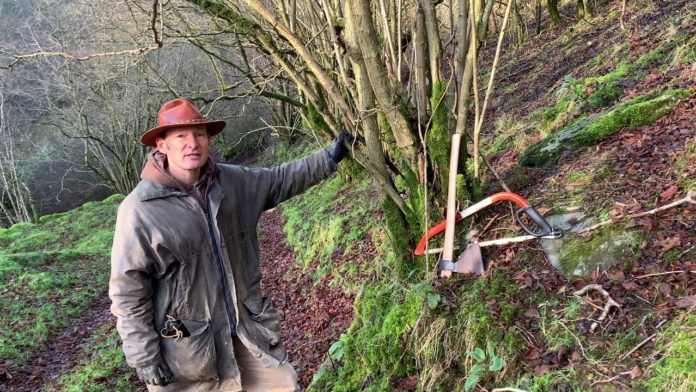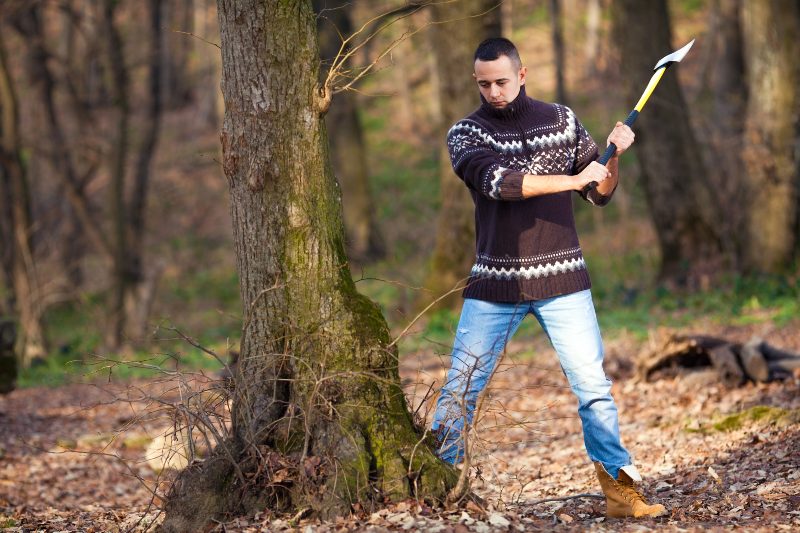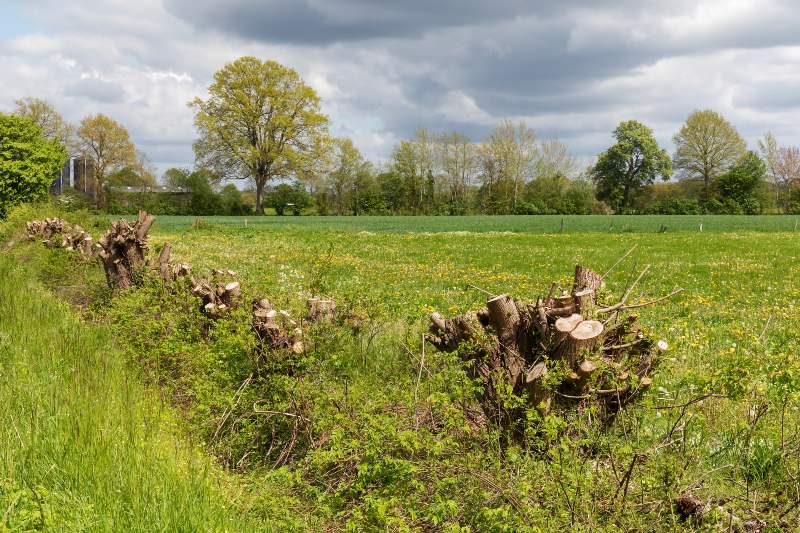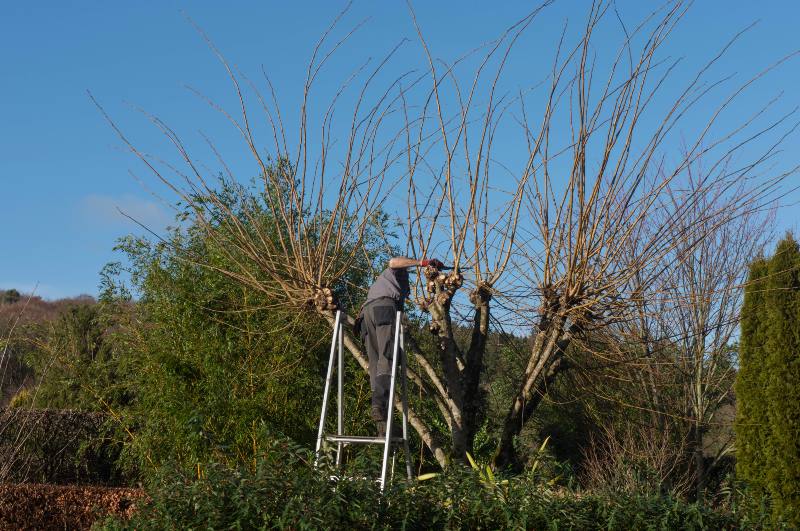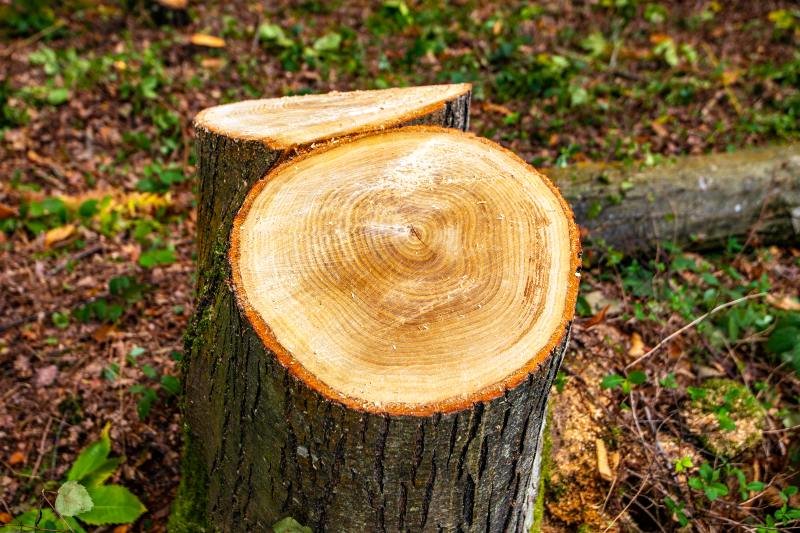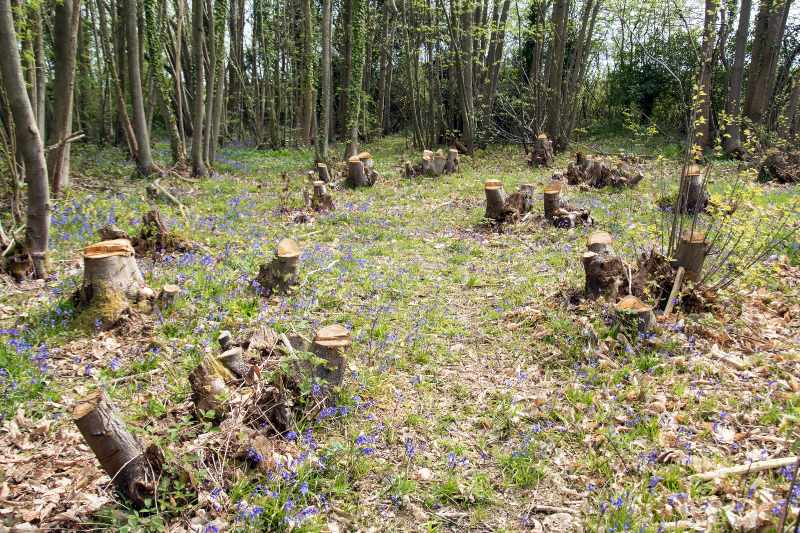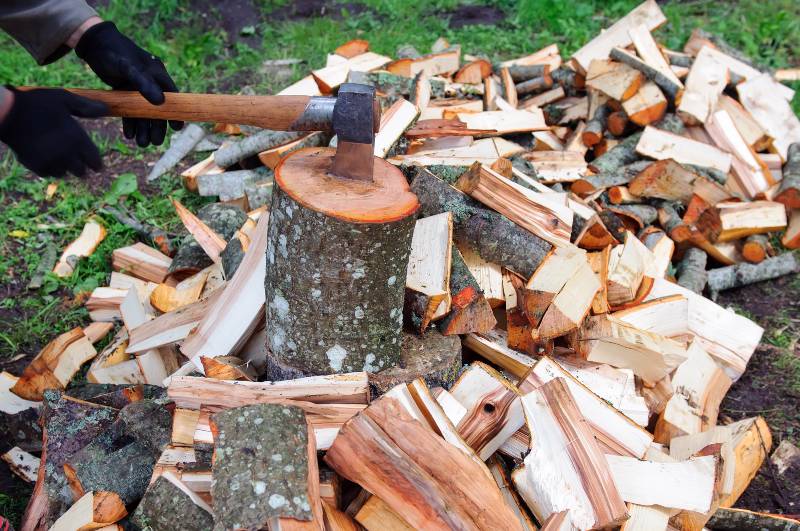Coppicing trees for firewood is an old tradition that started 12,000 years ago. It is a sustainable way not only to produce wood but also to conserve a forest and to provide survivalists with food.
Read on as we answer your most frequently asked questions about coppicing trees.
RELATED: How To Choose The Best Firewood For A Perfect Campfire
Your Ultimate Guide to Coppicing Trees for Firewood
What Is Coppicing Trees?
The word ‘coppice’ is derived from the French word ‘couper’ which means to cut. Essentially, coppicing trees is a reproduction process wherein a tree is cut down close to ground level. To be specific, it is cutting down a tree within six inches or 15 centimeters from the ground.
This method encourages the regeneration of multiple stems from the base or a multi-stemmed tree instead of just a large single-trunked tree.
After cutting down the roots or stumps, many branchlets, twigs, sprouts, or shoots will emerge after several years. You can cut or harvest the coppiced tree, and you can start a new cycle again without having to replant the tree.
This is why coppicing is also considered a method of managing woodland. It can quickly grow a supply of timber and renew it naturally.
A coppiced tree can grow wood in around half the time it would take for a seed to grow the same amount of wood.
You may use the coppiced wood to build almost anything you need in a community, including:
- fencing
- firewood
- pile foundations
- riverbank protection
- woodland crafts, such as crates and baskets
- handles of shovels, axes, brooms, rakes, and other tools
In addition, a coppice woodland or forest can also provide you with a sustainable supply of food. It can offer:
- truffles
- herbs
- berries
- mushrooms
- fruits
- nuts
- honey
What Is the Difference Between Coppicing and Pollarding?
Coppicing and pollarding are both pruning techniques, which is selectively removing or reducing parts of a tree. Both methods can help maintain various tree species and provide you with an abundant supply of wood.
Coppicing is a traditional process that generates young and strong stems, which you may use for building, fencing, or fuel. In this process, you cut a tree down nearly to the ground, which stimulates the regrowth of vigorous new shoots.
Pollarding is like coppicing, wherein you also encourage the growth of new stems. But in this technique, the trees are not cut at ground level. Instead, you cut the stems and branches next to the trunk, maintaining a certain height for the plant.
Typically, pollarding is employed to keep tall trees, which are planted near streets, from blocking electrical wires.
Is Coppicing Good for Trees?
Nowadays, most wood is produced by killing trees. But with coppicing, you do not have to worry about trees dying, even if they are old, because coppicing keeps the trees at a young stage, which lets them reach immense ages.
Additionally, periodic cutting significantly extends a tree’s life. Some tree stumps are even thought to have been repeatedly coppiced for hundreds of years!
This is because their diameters are so large that they measure as much as 18 feet across. This means that the trees have been around for centuries.
Coppicing also recreates and restores old trees or shrubs. Moreover, it encourages the growth of stems, which are woody enough for charcoal-making and firewood.
RELATED: Properly Collecting Firewood For The Winter Months Ahead
What Are the Cons of Coppicing?
With coppicing, you might be able to harvest only small-sized timber. Additionally, your woodland might not look aesthetically pleasing after coppicing.
And since the growth rate of new stems in this method is faster, the soil where the tree is planted might lose a considerable amount of minerals and nutrients.
The coppiced tree might also be vulnerable to damage by wind and frost.
Strong winds might break the branchlets and twigs since they are not attached to the soil. And ice might form inside the plant tissue, which can harm the cells of the plant, and in effect, kill the coppice shoots.
When Should Trees Be Coppiced?
You must coppice trees or adjust their shape around February to March or late winter to early spring. During this time, the weather is cold, and most plants go dormant or stop growing.
Coppicing a tree while it is dormant can make it easier for the tree to recover. The plant can put its energy into producing healthy, new sprouts when spring or the warmer temperature comes.
What Are the Best Trees to Coppice for Firewood?
With fuel prices continuously spiraling upwards, firewood remains to be one of the primary sources of energy for cooking and heating in several countries. This is why if you are a landowner, coppicing trees for firewood is a practical and efficient plan of action.
Fortunately, you may coppice almost all trees. However, you must take into consideration the following factors when coppicing:
- soil moisture content
- soil type
- topography
- soil acidity
- microclimates, such as shade, wind direction, and sun
For instance, hazel is productive when coppiced and when planted in good, dry land. This tree is also favorable to wildlife.
On the other hand, if the soil is heavy, a hornbeam is a better choice. And if the place is damp, alder and beech tend to coppice better.
Some of the tree species that are perfect for firewood and produce a beautiful flame include:
- Ash: Because of its low moisture content, it makes for ideal firewood.
- Beech: This burns for several hours with a calm, bright flame.
- Birch: A classic among firewoods, this tree produces a strong blue flame.
- Oak: This produces a strong and lasting heat, which is ideal for long winter nights.
Other tree species that are also suitable for coppicing include:
- dogwood
- elder
- field maple
- flamingo
- foxglove
- lime
- smoke bush
- sweet chestnut
- sycamore
- willow
- yew
Check out this video by bundu fundi as they share why, how, and when to coppice hazel trees:
Coppicing trees is a technique that you can use to produce wood without having to plant new trees and without having to kill trees. Furthermore, this method can help prolong a wood’s life.
You can also continually repeat this process to manage woodland, rejuvenate trees, and encourage healthy stems to grow. These can offer a wide range of rich habitats and provide benefits for biodiversity.
Note: There is a poll embedded within this post, please visit the site to participate in this post’s poll.
Apart from coppicing trees, what other woodland management techniques do you know? Let us know your thoughts in the comment section below!
Up Next:
- 3 Quick Tips To Identify Dry Firewood
- How to Start a Fire in The Snow
- No Turkey? No Problem | 11 Alternative Thanksgiving Dinner Ideas to Turkey
Don’t forget to stay connected with us on Facebook, Twitter, Pinterest, and Instagram!


